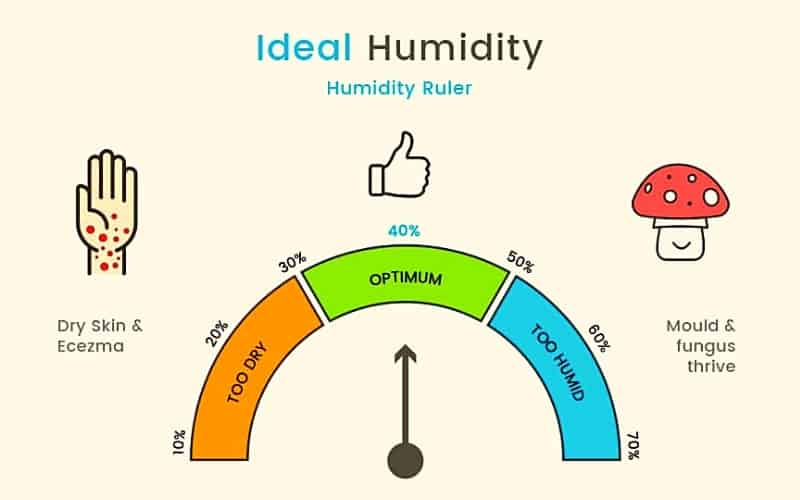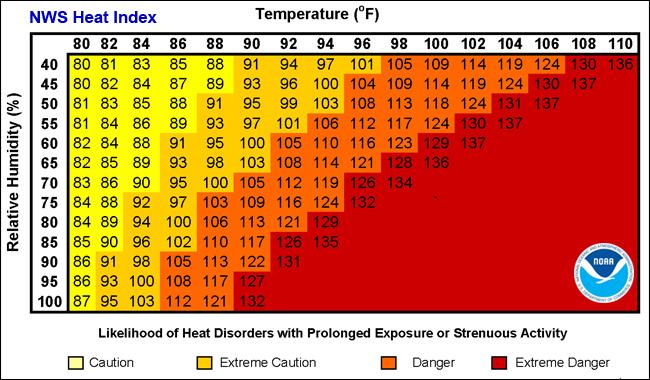What Is Considered High Humidity Percentage
.jpg?width=3508&name=Humidity level chart (1).jpg)
Have you ever walked into your home and felt that heavy, damp air, even with your air conditioning running? Or maybe you've noticed condensation forming on your windows, or even worse, a musty smell permeating throughout? These are all signs of a common issue: high humidity. It's not just uncomfortable; excessive humidity can lead to mold growth, damage to your belongings, and even health problems. This article will guide you through understanding what's considered high humidity, how to diagnose the problem, and what steps you can take to address it yourself.
Understanding Humidity Levels
Before diving into troubleshooting, let's establish some baselines. Humidity refers to the amount of moisture in the air, usually expressed as a relative humidity percentage (RH%). This percentage represents how much water vapor is in the air compared to the maximum amount it could hold at that temperature. So, what's considered too high?
Generally speaking:
- 30-50% RH: This is considered the ideal range for indoor humidity. You'll feel comfortable, and there's minimal risk of mold or condensation.
- 50-60% RH: Still acceptable, but you might start noticing slight discomfort or condensation under certain conditions (like a cold window).
- Above 60% RH: This is where problems begin. You'll likely feel sticky and uncomfortable, and the risk of mold and mildew growth increases significantly.
- Above 70% RH: This is definitely too high. Immediate action is needed to address the humidity problem.
It's important to note that these are general guidelines, and personal comfort levels can vary. However, exceeding 60% RH consistently is a red flag.
Diagnosing the High Humidity Problem
Now that you know what humidity level to aim for, let's figure out what's causing the issue in your home. Here's a methodical approach:
Step 1: Measure the Humidity Level
The first step is to accurately determine your home's humidity level. This requires a hygrometer or a humidity sensor. These devices are readily available at most hardware stores and online retailers. Many smart thermostats also include built-in humidity sensors.
Without Tools: If you don't have a hygrometer, look for these visual cues: condensation on windows or mirrors, damp spots on walls or ceilings, a musty odor, or visible mold growth. These are strong indicators of high humidity, but they don't give you a precise reading.
With a Hygrometer: Place the hygrometer in different areas of your home, particularly in rooms where you suspect high humidity (bathrooms, kitchens, basements). Leave it for several hours to get an accurate reading. Take readings at different times of the day, as humidity levels can fluctuate.
Step 2: Identify Potential Sources of Moisture
Once you've confirmed high humidity, the next step is to identify the source. Think like a detective and look for clues:
Common Indoor Sources:
- Leaks: Check for leaky pipes under sinks, around toilets, and in the basement. Look for water stains on walls or ceilings.
- Poor Ventilation: Bathrooms and kitchens generate a lot of moisture. Are your exhaust fans working properly? Are you using them when showering or cooking?
- Cooking and Showering: These activities release significant amounts of moisture into the air.
- Indoor Plants: While plants can improve air quality, too many can contribute to humidity.
- Aquariums: Evaporation from aquariums can increase humidity levels.
- Clothes Drying Indoors: Drying clothes inside releases moisture into the air.
- Basement: Basements are naturally prone to humidity due to their proximity to the ground.
Common Outdoor Sources:
- Groundwater: If your home has a damp basement, groundwater seepage could be the culprit.
- Poor Drainage: If rainwater isn't draining away from your foundation properly, it can seep into your home.
- Humid Climate: In naturally humid climates, simply opening windows can introduce excessive moisture into your home.
Without Tools: Visually inspect for leaks, check for obvious signs of dampness or mold, and observe your daily habits (how often you shower, cook, etc.). Pay close attention to areas that tend to be damp, such as bathrooms and basements.
With Basic Equipment: A flashlight can help you inspect dark corners and under sinks. A moisture meter (available at hardware stores) can help you detect hidden moisture in walls and floors. This is especially useful if you suspect a leak but can't see any visible water.
Step 3: Evaluate Your HVAC System
Your heating, ventilation, and air conditioning (HVAC) system plays a crucial role in controlling humidity. If it's not functioning properly, it could be contributing to the problem.
Is your air conditioner sized correctly? An oversized AC unit will cool your home quickly but won't run long enough to remove sufficient moisture from the air. An undersized unit will run constantly and struggle to cool effectively.
Is your AC unit properly maintained? A dirty air filter can restrict airflow, reducing the unit's ability to dehumidify. A clogged evaporator coil can also hinder performance.
Is your ductwork sealed properly? Leaky ducts can introduce humid air from outside into your home. They can also cause conditioned air to escape, making your AC system work harder.
Without Tools: Check your air filter regularly and replace it when it's dirty. Make sure vents are open and unobstructed. Listen for unusual noises from your AC unit.
With Basic Equipment: You can visually inspect your ductwork for obvious leaks or damage. Duct tape can be used for minor repairs, but for more significant issues, professional sealing is recommended.
DIY Solutions for High Humidity
Once you've identified the source(s) of the humidity, you can take steps to address the problem yourself. Here are some simple and safe DIY actions:
- Improve Ventilation: Use exhaust fans in bathrooms and kitchens when showering or cooking. Open windows when the outdoor humidity is lower than the indoor humidity. Consider using a whole-house fan to circulate air.
- Fix Leaks: Repair any leaky faucets or pipes promptly. Address any water damage to prevent mold growth.
- Control Moisture Sources: Avoid drying clothes indoors. Cover pots when cooking. Reduce the number of indoor plants or consider switching to plants that require less watering.
- Use a Dehumidifier: A dehumidifier can effectively remove moisture from the air, especially in damp areas like basements. Choose a unit with the appropriate capacity for the size of the room.
- Improve Drainage: Ensure that gutters and downspouts are clean and directing water away from your foundation. Consider improving the landscaping around your home to promote better drainage.
- Seal Cracks and Gaps: Caulk around windows and doors to prevent moisture from entering your home. Seal any cracks in your foundation.
- Proper AC Maintenance: Clean or replace your air filter regularly (every 1-3 months). Ensure that your outdoor AC unit is free of debris.
Simple Checks (No Tools):
- Air Filter: Change your air filter every 1-3 months. This is the easiest and often most impactful step.
- Ventilation: Ensure bathroom and kitchen exhaust fans are working and used. Open windows when the humidity outside is lower than inside.
- Visual Inspection: Walk around your home looking for obvious signs of water leaks, condensation, or mold.
Basic Equipment Checks:
- Moisture Meter: Check for moisture in walls and floors, especially around potential leak sources.
- Duct Tape: Seal small leaks in ductwork.
When to Call a Professional
While many humidity issues can be resolved with DIY solutions, some problems require professional attention. Here's when it's time to call an HVAC technician or other qualified professional:
- Persistent High Humidity: If you've tried the DIY solutions and your humidity levels remain consistently high, there may be a more serious underlying problem.
- Suspected Mold Growth: If you suspect mold growth, especially in large areas, it's best to consult a mold remediation specialist. Attempting to remove mold yourself can be hazardous.
- HVAC System Issues: If you suspect that your AC unit is the source of the problem (e.g., it's not cooling properly, making unusual noises, or is the wrong size for your home), contact an HVAC technician for diagnosis and repair.
- Ductwork Problems: If you have extensive ductwork leaks or damage, professional sealing and repair are recommended.
- Foundation Problems: If you suspect that groundwater seepage is the cause of the humidity, consult a foundation repair specialist.
- Electrical Issues: Never attempt to repair electrical components of your HVAC system. Always call a qualified electrician for electrical repairs.
Why call a professional? Dealing with refrigerant, complex HVAC systems, or mold remediation requires specialized knowledge and equipment. Attempting these tasks yourself can be dangerous and may even void your warranty. It's always better to err on the side of caution and seek professional help when needed.
Long-Term Humidity Management
Addressing high humidity is not just a one-time fix; it's an ongoing process. Here are some tips for long-term humidity management:
- Regular Monitoring: Continue to monitor your home's humidity levels regularly using a hygrometer.
- Preventative Maintenance: Schedule regular maintenance for your HVAC system, including air filter changes and coil cleaning.
- Address Leaks Promptly: Repair any leaks as soon as they are discovered.
- Improve Ventilation: Maintain good ventilation throughout your home.
- Consider a Whole-House Dehumidifier: If you live in a humid climate, a whole-house dehumidifier can provide consistent humidity control.
By understanding what constitutes high humidity, identifying the sources of moisture, taking appropriate DIY actions, and knowing when to call a professional, you can create a comfortable and healthy living environment in your home.










